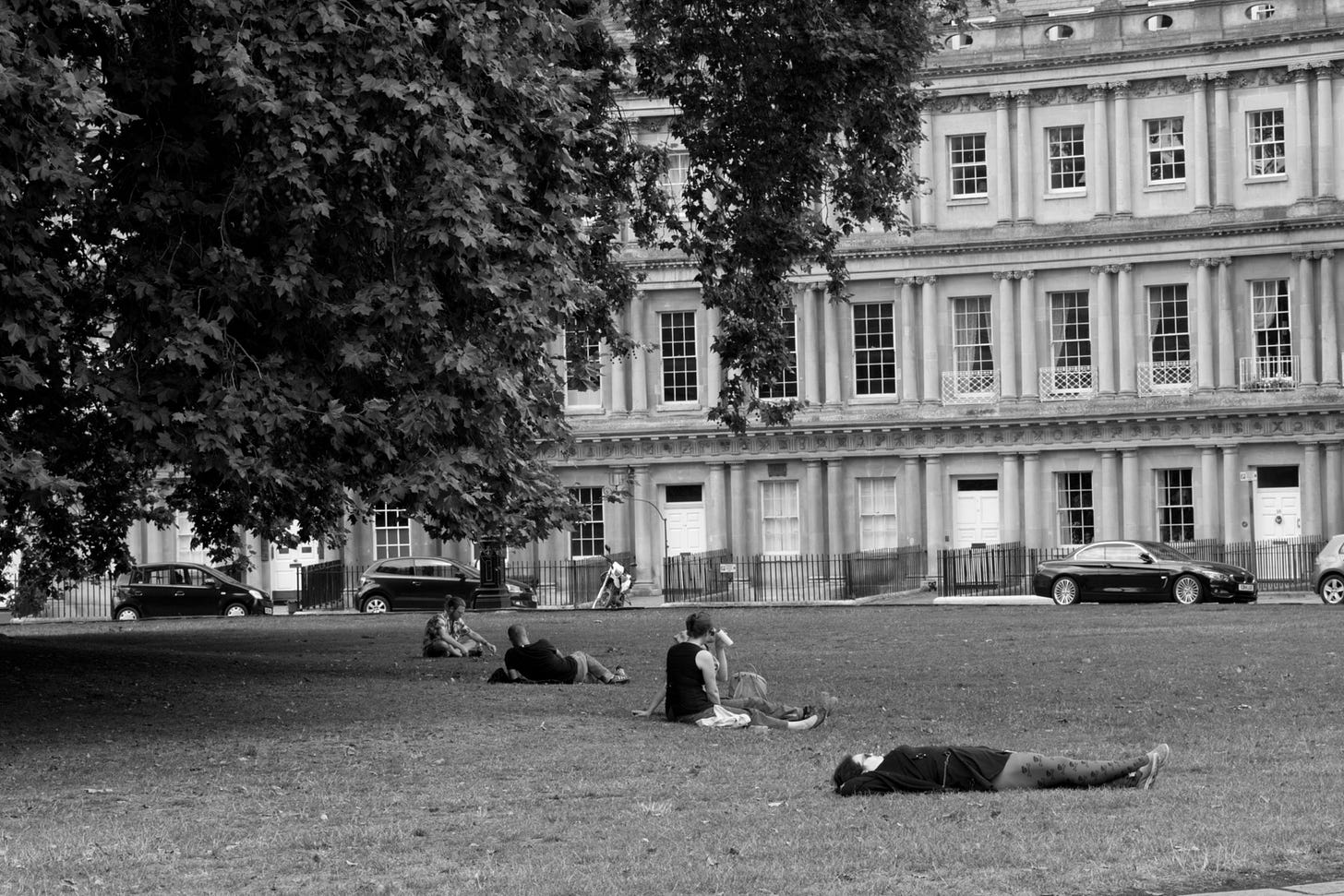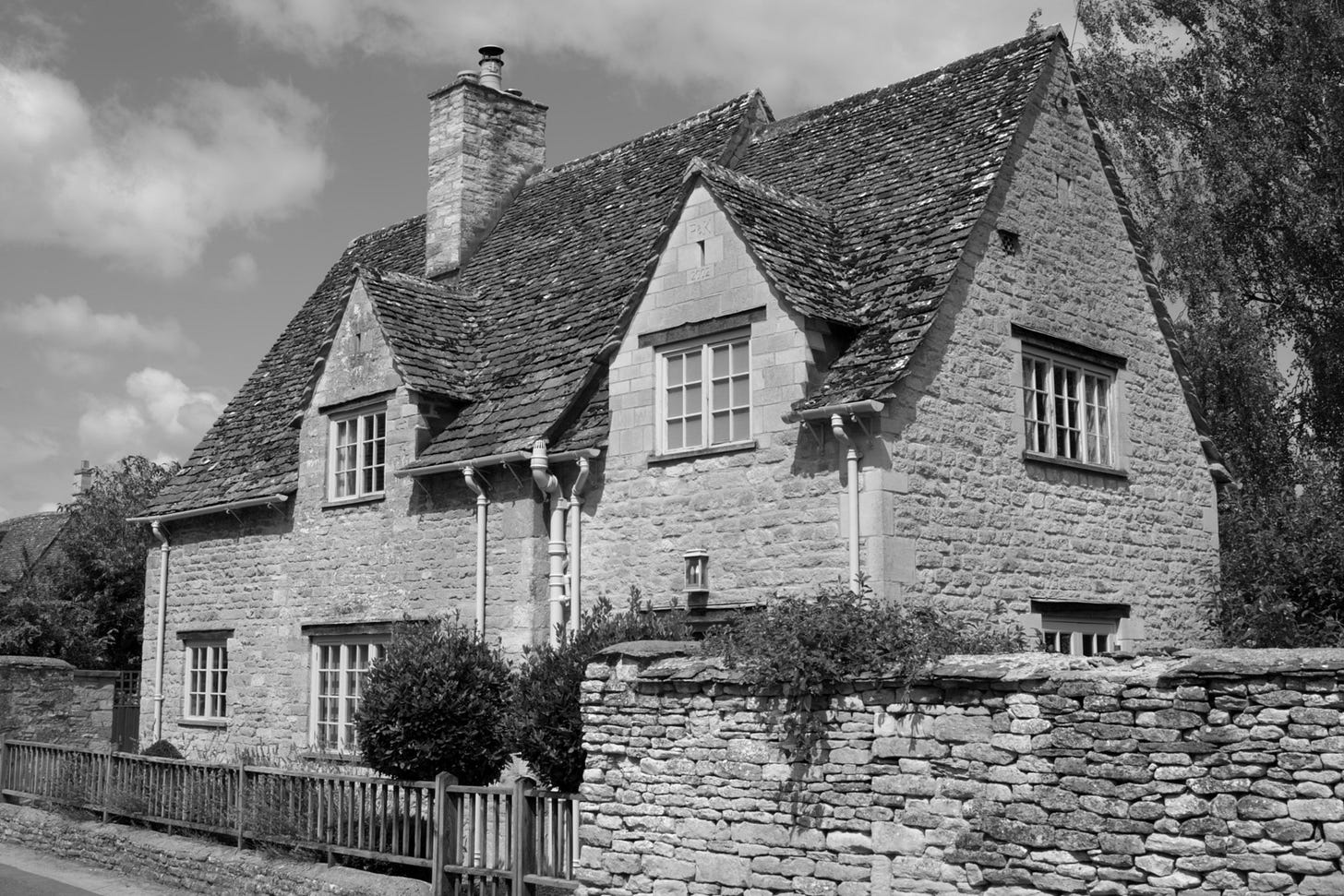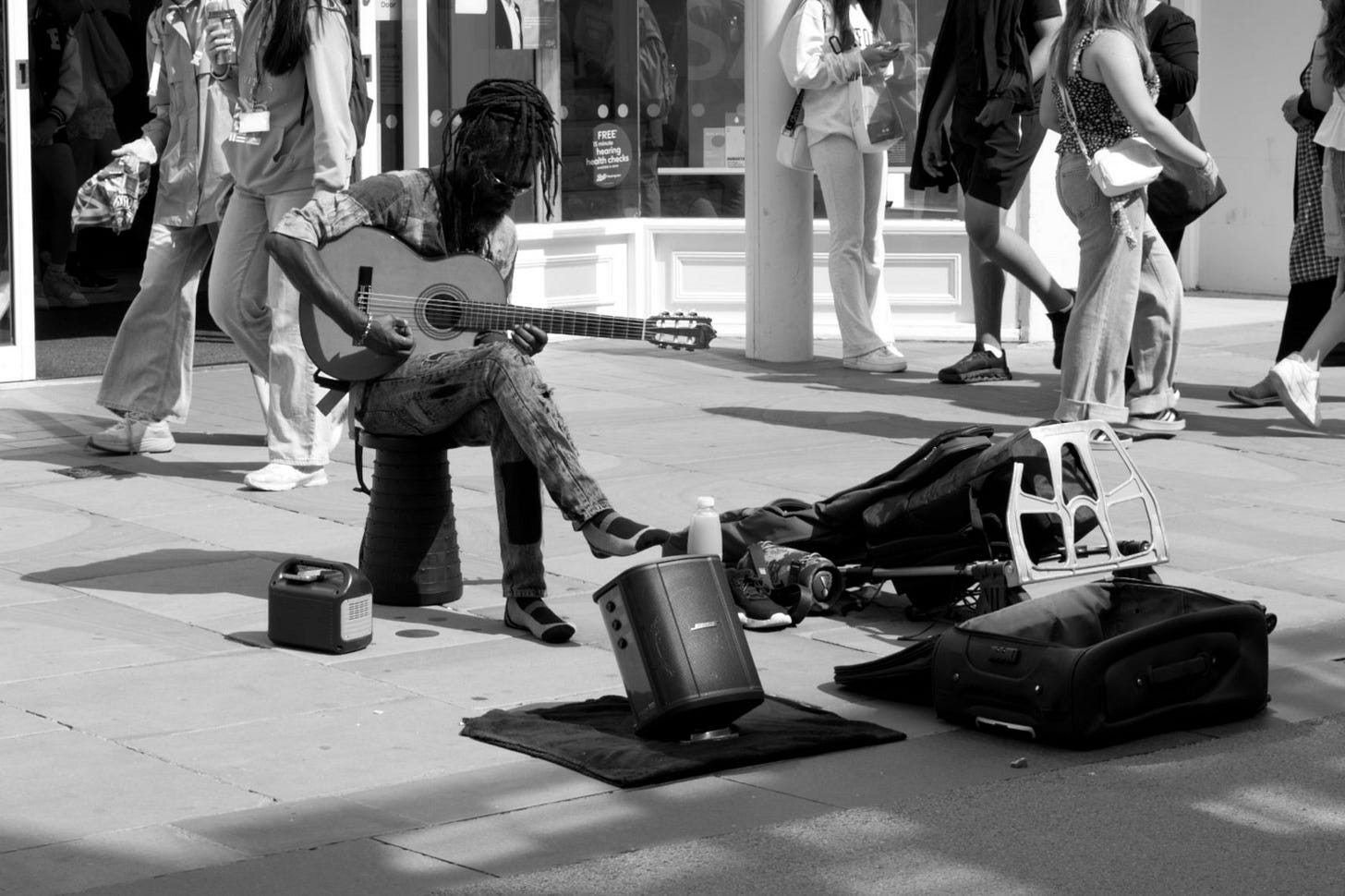The choice between color and black & white
A story in two tones
When I recently travelled through the beautiful Cotswold countryside in England, I took two cameras with me: my Canon EOS 70D, ready to capture the vibrant colors of the landscape, and my monochrome Pentax K3 with its black & white sensor.
My initial plan was to alternate between the two cameras. I intended to use the Canon to photograph the sunny yellow fields and the Pentax to capture the characteristic stone walls and cottages. However, once I was there, I was captivated by something else. I must confess that I didn't take the Canon out of my bag once, even leaving it in the cottage when I went out. Apart from a few photos I took with my Samsung phone (including for Polarsteps to show my friends and family back home), I focused entirely on the Pentax.
The world through the lens of a monochrome camera is completely different. You no longer see colors, but discover contrasts, textures, and the essence of light. It forces you to view things differently. The colors that would normally steal your attention are gone. What remains are shapes, lines, and the interplay of light and shadow. It's a pity that the viewfinder shows you the image in color, but if you practise shooting in black & white enough, you will discover what works and what doesn't.
For example, a bright red door in an old stone wall, which immediately catches the eye in color, becomes an intriguing play of tones and textures in black & white. This change in perception can transform your entire photographic approach.
Your intention determines your choice
During my trip, I realized that it's not just about choosing between color and black & white. It's about intention. One choice emphasizes the beauty of the colors, while the other forces you to look deeper and reveal the soul of the subject.
Color photography is excellent at capturing emotional warmth, seasonal atmospheres and cultural context. The golden hour in the Cotswold, with its honey-colored stone cottages and emerald green hills, is best captured in color. However, black & white reveals the timeless architecture and weathered textures of ancient walls, as well as the drama of the ever-changing English weather, in a way that color simply cannot match.
The technical reality
There is also a practical side to my experience. The Pentax K3 Monochrome, which has no color filter on the sensor, captures more light and detail than traditional color sensors. This technical advantage translates directly into better image quality in black & white, with finer gradations and more nuance in the grey tones.
This technical superiority, combined with the mental focus that monochrome photography requires, creates a powerful combination. You are forced to compose more consciously and think more deeply about what you want to capture.
The lesson of two cameras
What started as a practical backup strategy, two cameras for different purposes, ended up teaching me a valuable lesson in photographic focus, and confirming my commitment to a single visual approach. By only using the Pentax, I experienced (again) how committing to a single visual approach can enhance your creativity.
I think this explains why many great photographers ultimately specialize in one medium or approach. It's not about limitation, but deepening your practice. By committing to one visual language, you develop a fluidity that is impossible when constantly switching between different approaches.
Either way, both approaches have their own charm. The question is not which is superior, but which best suits your artistic vision and the stories you want to tell. For me, my experience of the Cotswold remains a powerful reminder of the transformative power of making conscious creative choices.
Question:
What do you think? Is there a moment when you necessarily choose color or black & white?
All photos (Pentax K3-mark III Monochrome) are unedited, except for resizing for web use.
In a following article I will show you some more images from the Cotswold.
Till next week,
Found this valuable? Send a tip









I originally got into bw as a way to reconcile the aggressive editing I was doing in colour. Once I saw the emotion generated from those dark shadows and extreme contrast I was hooked.
Having started my photographic journey 51 years ago, as I hit my teens, there was only film available and I could only afford B&W. I soon learned to develop the film myself and, eventually, print from it.
I enjoy shooting in colour but only where the colour adds to the scene or is the subject matter itself. I grew to love the fact that shooting in B&W helps simplify any scene down to shape, texture and tone. I had a Leica M9 monochrom for a while and loved it and, in many ways, I wish I still had it.
That said, there is some great mono conversion software out there and, although I still shoot some B&W 35mm and 120 film, converting a colour DNG / RAW file to B&W is quite easy. So, I usually set my camera to view in B&W, shoot DNG (colour) and JPEG in B&W and decide what works best when I load the results into Capture One.